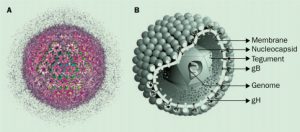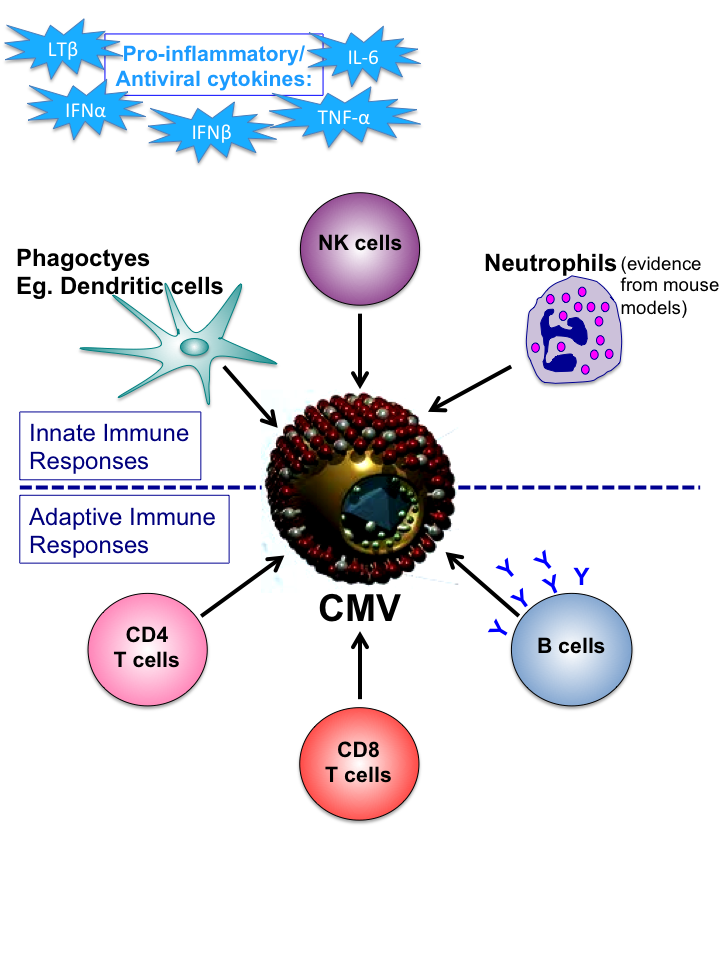Abstract
Cytomegalovirus (CMV) was isolated from its natural host, Peromyscus maniculatus, and named Peromyscus CMV (PCMV). A recombinant PCMV was constructed containing Sin Nombre virus glycoprotein G1 (SNV-G1) fused in frame with the enhanced green fluorescent protein (EGFP) gene inserted at a site homologous to the human cytomegalovirus CMV Recombinant UL33 (P33) gene. Recombinant CMV was used for the expression and immunization of deer mice against SNV-G1.
The results of the study indicate that P. maniculatus could be infected with as few as 10 viral particles of recombinant virus. Challenge of P. maniculatus with recombinant or wild-type PCMV did not produce any obvious pathology in infected animals. P. maniculatus immunized with the recombinant virus developed an antibody response against SNV and EGFP. When rechallenged with the recombinant virus, the animals exhibited an anamnestic response against SNV. Interestingly, a preexisting immune response against PCMV did not prevent reinfection with recombinant PCMV.

Symptoms
Most healthy people who are infected with CMV may not experience symptoms. Some experience minor symptoms. People who are more likely to experience signs and symptoms of CMV include:
- Newborns who were infected with CMV before birth (congenital CMV).
- Infants who become infected during or shortly after delivery (perinatal CMV). This group includes babies infected through breast milk.
- People who have weakened immune systems, such as those who have had an organ, bone marrow, or stem cell transplant, or those who are infected with HIV.
Babies
Most babies with congenital CMV appear healthy at birth. Some babies with congenital CMV who appear healthy at birth develop signs over time, sometimes not for months or years after birth. The most common of these late signs are hearing loss and developmental delay. A small number of babies may also develop vision problems.
The following signs and symptoms are more common in babies with congenital CMV who are sick at birth:
- Premature birth
- low birth weight
- Yellow skin and eyes (jaundice)
- An enlarged and malfunctioning liver
- Purple spots on the skin or a rash, or both
- Abnormally small head (microencephaly)
- enlarged spleen
- Pneumonia
- seizures
People who have weakened immunity
If your immune system is weakened, you could experience serious problems that affect your:
- Eyes
- Lungs
- Liver
- Esophagus
- Stomach
- bowels
- Brain
Evolution and recombination of human cytomegalovirus
Cytomegaloviruses (CMV) are herpesviruses that infect a variety of mammals and establish lifelong infections in their specific host. Human cytomegalovirus (HCMV) is a widespread pathogen that persists latently in most humans. Although generally asymptomatic, HCMV can induce life-threatening disease in congenitally infected newborns and in immunocompromised patients. This public health problem is compounded by the increasing prevalence of antiviral-resistant strains and the lack of an effective vaccine.

This is complicated by the virus’s active inhibition of the host’s adaptive immune response, apparently to promote superinfection. Unravelling the evolutionary dynamics of HCMV is essential for the epidemiological control of the virus, as well as for the effective development of drugs and vaccines. However, this task has been difficult until now due to the complex life cycle that alternates between dormant periods and stochastic reactivation events, and the presence of mixed populations within the host.
Furthermore, accurate characterization of the genomic diversity of wild-type viruses has been hampered by the mutagenic effect of the culture step required in traditional whole-genome sequencing methods. Using recent technological advances in targeted DNA capture (Depledge et al., 2011), we were able to collect an unprecedented dataset of complete wild-type viral genome sequences from clinical samples from congenitally infected infants and transplant recipients. immunosuppressed, including serially sampled individuals.
This allowed us to investigate the evolutionary dynamics within the host and trace the evolutionary history of the virus at the species scale. This showed in particular that HCMV genomes recombined extensively and that selection acted heterogeneously across the genome and over time, in response to pressure from the host immune system. The combination of these processes likely contributed to the strong adaptation of CMVs to their host, allowing them to co-evolve in the long term.

